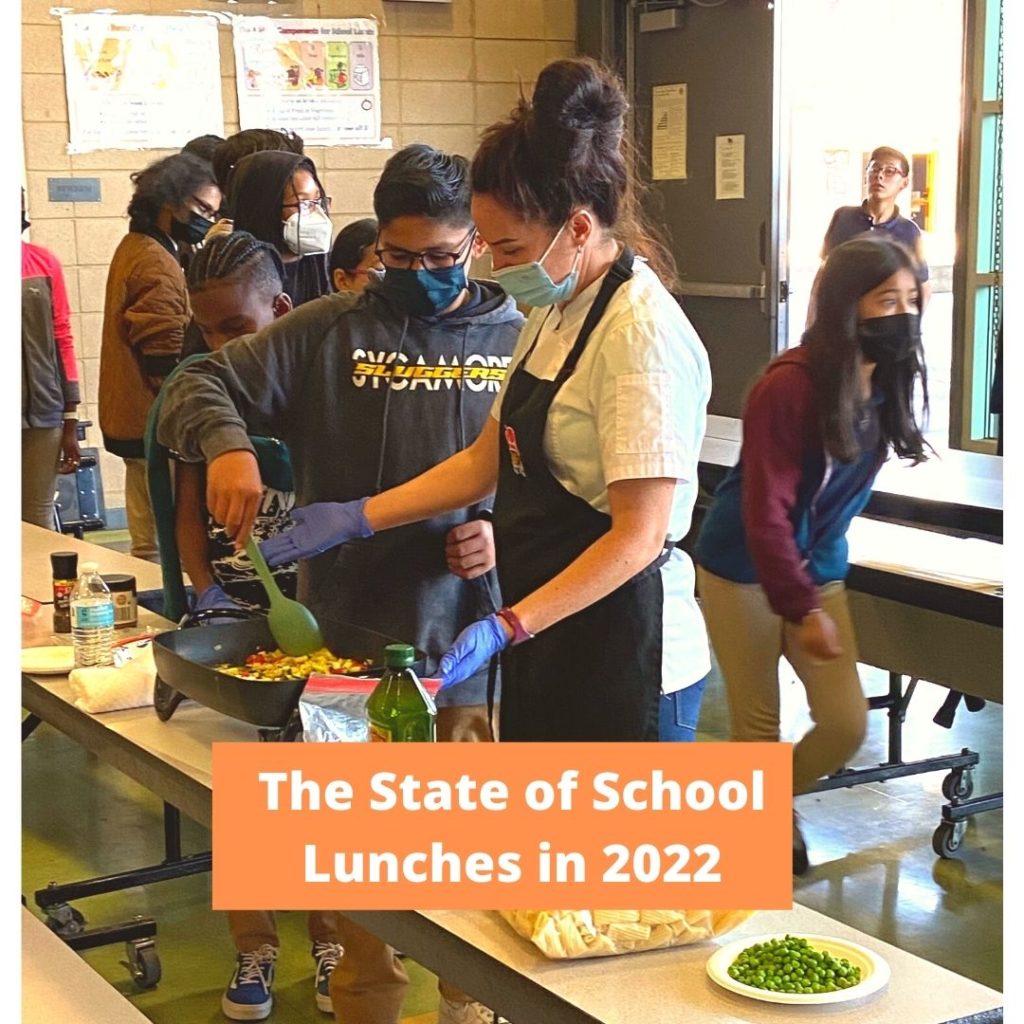
The US Department of Agriculture is spending a LOT of money on school lunches, ($750 million!) but I don’t think this will actually help improve the quality of lunches at schools. It sounds good on paper, but the reality of what students are eating these days isn’t a pretty picture.
LIFT Enrichment partners with a lot of schools that provide free and reduced lunches for students because they are Title 1 schools.
Here was my experience, on the ground, a few months ago.
Before we began our healthy culinary workshops in a school’s cafeteria, I asked the students what they ate for lunch that day.
One student, in 4th grade, rolled her eyes and said “pizza.” I dug a little deeper and she described how the pizza was disgusting. It was obviously frozen and reheated. It was served with a side of bagged baby carrots and apple slices that were also in a bag.
Another student later mentioned how her pizza was “green” on the bottom, from mold.
This is not a very nutritious meal for a child to have the energy and health to go about the rest of the school day…and yet we’re spending hundreds of millions on these lunches!
Why can’t schools use those funds to hire cooks to grocery shop and make very simple food from scratch like Pasta Primavera with Zucchini and Bell Peppers (Lesson 1) or Black Bean & Spinach Quesadilla with Pico De Gallo (Lesson 2)! It costs around $1-$1.50 per serving, as most of the money will go toward the cost of the labor (aka chefs), which is like how a restaurant operates.
A lot of issues with school lunches comes to the fact that there are tons of regulations vendors have to deal with. One challenge I’ve faced while trying to bring healthy cooking classes to LAUSD is how all food items must be “wrapped” and/or “vacuum sealed.” Basically, you can’t go to a local Smart n Final or Vons and buy fresh bell peppers, zucchini, garlic and onion from a because they don’t come from a pre-wrapped “bag.”
At a different campus in Southern California, I asked students what they ate for lunch and one student say “Chili Cheese Nachos.”
My chef mind imagined a freshly made chili with lots of beans and veggies, served over oven-baked chips (which are crispy and have a lot less fat than deep-fried chips) and with a bit of grated cheddar cheese on top. It’s a fairly healthy meal with a good combination of carbs, protein and fiber.
I took a look at what was actually served:
- Chips from a bag
- “Chili” from a vacuum-sealed container (who knows how many chemicals were in it)
- And “Cheese sauce”…also from a container.
And served alongside apple slices…in a bag.
The more I observe what students are eating, and the constraints the school lunch programs face, it becomes more obvious how better off parents and students would if they just make their own lucnhes.
The recipes we teach kids are easy, inexpensive and HEALTHY. They are full of vitamins like A (good for your eyes) C (good for your immune system) K (good for your blood) antioxidants (good for your skin, cells and long-term health) and many more.
One hour on a Sunday could yield a family plenty of healthy lunches that are all portable for kids to eat at school like Pasta Primavera (which is fantastic with sauteed chicken breasts) or Cauliflower Rice (which pairs well some slices of stir-fried steak or tofu)
Spending more money on school lunches won’t fix this problem that a lot of students are NOT eating healthy foods.
Instead, EMPOWER students to learn how to cook so they can make their own lunches and bring them to school!
Otherwise it’s going to be more chili cheese nachos and frozen pizza meals….where everything comes in a vacuum-sealed container.
If you’d like to bring healthy culinary workshops to your school, reply to this email or call us at 310 890 8704!
We’re here to help students learn the lifeskill of cooking so they can eat REAL food that’ll give the energy and nutrients they need to thrive at school and beyond.
Further Reading:
5 Ways To Improve The Health of Your Students in 2022
How We Teach Cooking Classes WITHOUT A Kitchen (5 techniques we use)